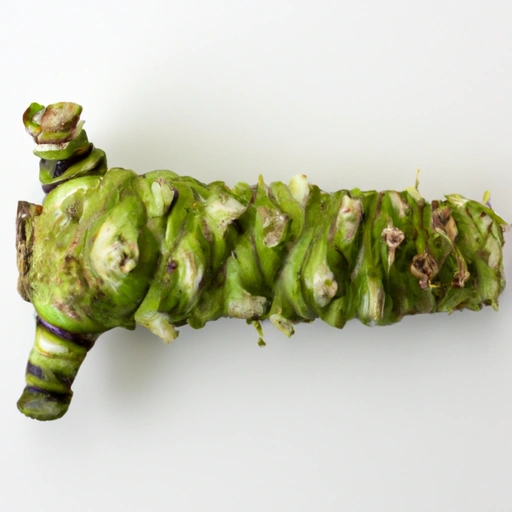Wasabi
Description

Wasabi is a plant of the Brassicaceae family, which also includes horseradish and mustard. It is known for its strong, pungent flavor that provides a unique heat which dissipates quickly in the mouth. The wasabi plant grows naturally along stream beds in mountain river valleys in Japan. The part commonly used as a spice is the stem, which is grated into a paste. Authentic wasabi is notoriously difficult to cultivate and thus can be expensive, leading to many products outside Japan being merely horseradish dyed green to resemble wasabi.
Common uses
Wasabi is most commonly used as a condiment for sushi and sashimi. It is also enjoyed with soba noodles, mixed into dressings, or used as a flavorful addition to marinades and sauces.
Nutritional value
Calories
Wasabi is low in calories, with approximately 109 calories per 100 grams (3.5 ounces).
Protein
It contains about 4.8 grams of protein per 100 grams (3.5 ounces).
Fat
Wasabi is low in fat, with only 0.63 grams per 100 grams (3.5 ounces).
Carbohydrates
There are about 23.54 grams of carbohydrates in 100 grams (3.5 ounces) of wasabi.
Vitamins
Wasabi includes Vitamin C and some B vitamins, including folate.
Minerals
The spice contains calcium, magnesium, potassium, and phosphorus.
Health benefits
Wasabi has several potential health benefits due to its antimicrobial properties and is believed to aid in digestion, act as a natural detoxifier, and even has anti-inflammatory and anti-cancer effects.
Potential risks
Overconsumption of wasabi may lead to adverse reactions such as allergic responses, or gastrointestinal discomfort for those with sensitive stomachs. Its pungency can also cause a temporary burning sensation in the nasal passages or mouth.
Common recipes
Wasabi is traditionally used in Japanese cuisine, particularly in dishes like sushi rolls, sashimi, and noodle bowls.
Cooking methods
Authentic wasabi should be grated fresh, as it loses flavor when exposed to air and heat. It is often added at the end of cooking to maintain its characteristic flavor.
Pairing with other ingredients
Wasabi pairs well with soy sauce as a dip for sushi, enhances the taste of seafood, and can be mixed into mayonnaise or aioli for a spicy spread.
Summary
Wasabi is a distinctive and versatile Japanese condiment that adds a sharp, fiery flavor to dishes without lingering heat. While expensive due to its cultivation challenges, it offers both unique taste and health benefits, making it a valued ingredient in various culinary traditions.